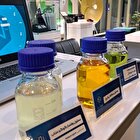Iranian Scientists Add Air Entraining Agents to Settle Challenge of 3D-Printed Concretes

Mohammad Rasoul Givkashi, a graduate of Amirkabir University of Technology, implemented a project titled ‘Evaluating the Durability of 3D Printed Concrete Mixtures Containing Air Entraining Agents’.
“Despite the development of different methods in various industries, the construction industry continues to be largely traditional, while this industry can benefit from the new technologies. Among the latest technologies in this industry is the construction of buildings and infrastructures by using the 3D printing method,” Givkashi said.
Noting that previous studies by researchers have shown that damage to these concretes from frost is a challenge, he said that the research aims to increase the durability of 3D printed concretes by examining the effect of air entraining agent on their various properties.
“In this study, we concluded that if we use optimal amounts of air-entraining admixture and design the concrete mix, we can increase the durability of concrete against frost and help improve its durability against other destructive factors by reducing permeability. In addition, this admixture can also contribute to the new properties of these mixtures, specially rheology,” Givkashi said.
In a relevant development in December, a faculty member of Islamic Azad University had also succeeded in designing and implementing a type of environmentally-friendly concrete that reduces pollutants by 50% and is 30% cheaper compared to other samples.
“This type of cement reaches its ultimate strength much faster than Portland cement and inherently has much lower permeability than Portland cement in the early stages; however, calcium aluminate cement, despite its good qualities, has two very key shortcomings that have caused the use of this cement in by engineers to be very low,” Alireza Rasekhi, a faculty member of the Civil Engineering department of Islamic Azad University’s Qeshm branch, told ANA.
“The first problem with this cement is that after a while, a transformation phenomenon occurs in it, which causes a sudden decrease in strength and, as a result, durability in concrete made with calcium aluminate cement, which is a very big drawback and, in addition, it is many times more expensive than ordinary cement,” he added.
“The result of our research was the production of a mixed calcium aluminate cement, which has three key advantages over previous cements. First, its technical specifications and durability have been greatly improved. Second, it is about 30% cheaper than a similar sample, and third, it reduces environmental pollution by about 50%, making it a green or environmentally friendly product,” Rasekhi said.
4155/v





















